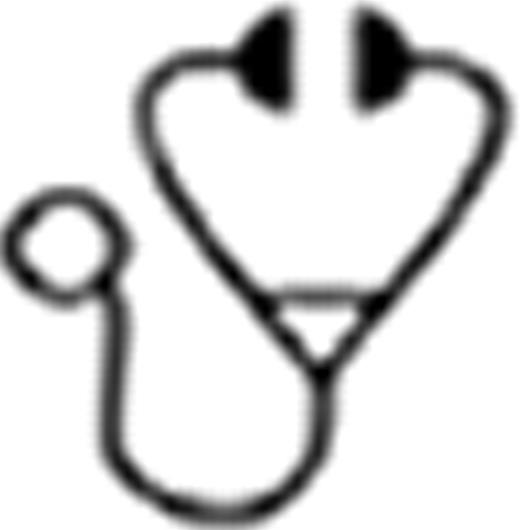Abstract
Elevated pre-transplant ferritin levels have been associated with increased mortality and transplant-related complications in hematopoietic cell transplant (HCT) recipients. However, attempts to define the impact of iron overload on transplant outcomes using ferritin are confounded by its lack of specificity. Using liver magnetic resonance imaging (R2-MRI) to quantify liver iron content (LIC), we designed a prospective cohort study to determine the impact of iron overload on outcomes following allogeneic HCT. Our primary study objective was to determine the impact of pre-transplant iron overload on overall survival (OS); secondary objectives included cumulative incidence of non-relapse mortality (NRM) and post-HCT complications. Adult patients with hematologic malignancies being considered for allogeneic HCT were recruited for this study. Enrolled patients underwent baseline, pre-transplant ferritin measurements; patients with ferritin levels > 500 ng/ml had LIC quantified using liver R2-MRI. Patients were defined as no-iron overload (ferritin ≤ 500 or LIC ≤ 1.8 mg/gdw) and iron overload (LIC > 1.8). Of the 112 patients recruited for the study, 24 were excluded (disease progression=12, unable to complete MRI=9, transplant delays due to pre-HCT complications=3) and 88 were included in the final analysis (no-iron overload=28, iron overload=60). Four patients had ferritin >500, but on MRI had LIC ≤ 1.8 and were included in the no-iron overload group. Median ferritin in the two groups was 290 (range, 52–2023) and 1732 (range, 510–7137), respectively. The median LIC in the iron overload group was 4.3 (range, 1.9–25.4). Baseline ferritin moderately correlated with LIC (Spearman's R=0.58). There was no significant difference in recipient age, conditioning intensity, graft source, or HCT comorbidity index scores between the two groups. Patients with iron overload were more likely to have acute leukemia (55% vs 15%) and less likely to have high risk disease (40 vs 75%). We observed no significant difference in OS, NRM, relapse, acute or chronic graft-versus-host disease, organ failure, bacterial infections, viral infections, or fungal infections among patients without and with iron overload (see Table). We also found no difference in the composite endpoint of NRM, any infection, organ failure or hepatic veno-occlusive disease (1 yr cumulative incidence 71% vs 80%, P=0.44). In multivariate analyses that adjusted for other important prognostic variables, iron overload status did not impact risks of overall mortality (relative risk 2.3 (0.9–5.9) for iron overload vs. no-iron overload). We also evaluated outcomes based on an LIC threshold of ≤ 5 vs > 5 and observed similar results (see Table). Immune reconstitution studies were done in 55 patients at 3, 6 and/or 12 months post-HCT (no-iron overload=19, iron overload=36). On generalized linear mixed modeling, presence of iron overload was not associated with delay in recovery of absolute lymphocyte count, total NK cells, total T cells, CD4 cells, CD8 cells, or regulatory T cells. In conclusion, we did not find an association between pre-transplant iron-overload defined by R2-MRI measured LIC and OS, NRM, complications or immune reconstitution after allogeneic HCT in adults. Pre-transplant ferritin levels only moderately correlated with LIC. Future studies of iron overload in HCT should consider LIC to define iron overload instead of ferritin.
Outcomes by Iron-Overload Status
| . | Prob (95% CI) . | Prob (95% CI) . | P-value . |
|---|---|---|---|
| Ferritin ≤ 500 or LIC ≤ 1.8 | LIC > 1.8 | ||
| N | 28 | 60 | |
| 2 yr OS | 78% (57–90) | 58% (44–70) | 0.12 |
| 2 yr NRM | 18% (4–33) | 21% (10–32) | 0.91 |
| 1 yr Bacterial Infection | 11% (0–22) | 13% (5–22) | 0.72 |
| 1 yr Fungal Infection | 7% (0–17) | 12% (4–20) | 0.49 |
| LIC ≤ 5.0 | LIC > 5.0 | ||
| N | 65 | 23 | |
| 2 yr OS | 62% (49–73) | 73% (49–87) | 0.42 |
| 2 yr NRM | 20% (10–30) | 19% (3–35) | 0.82 |
| 1 yr Bacterial Infection | 12% (4–20) | 13% (0–27) | 0.98 |
| 1 yr Fungal Infection | 12% (4–20) | 4% (0–12) | 0.28 |
| . | Prob (95% CI) . | Prob (95% CI) . | P-value . |
|---|---|---|---|
| Ferritin ≤ 500 or LIC ≤ 1.8 | LIC > 1.8 | ||
| N | 28 | 60 | |
| 2 yr OS | 78% (57–90) | 58% (44–70) | 0.12 |
| 2 yr NRM | 18% (4–33) | 21% (10–32) | 0.91 |
| 1 yr Bacterial Infection | 11% (0–22) | 13% (5–22) | 0.72 |
| 1 yr Fungal Infection | 7% (0–17) | 12% (4–20) | 0.49 |
| LIC ≤ 5.0 | LIC > 5.0 | ||
| N | 65 | 23 | |
| 2 yr OS | 62% (49–73) | 73% (49–87) | 0.42 |
| 2 yr NRM | 20% (10–30) | 19% (3–35) | 0.82 |
| 1 yr Bacterial Infection | 12% (4–20) | 13% (0–27) | 0.98 |
| 1 yr Fungal Infection | 12% (4–20) | 4% (0–12) | 0.28 |
Burns:Novartis Pharmaceuticals: Research Funding. Majhail:Novartis Pharmaceuticals: Research Funding.

This icon denotes a clinically relevant abstract
Author notes
Asterisk with author names denotes non-ASH members.


This feature is available to Subscribers Only
Sign In or Create an Account Close Modal